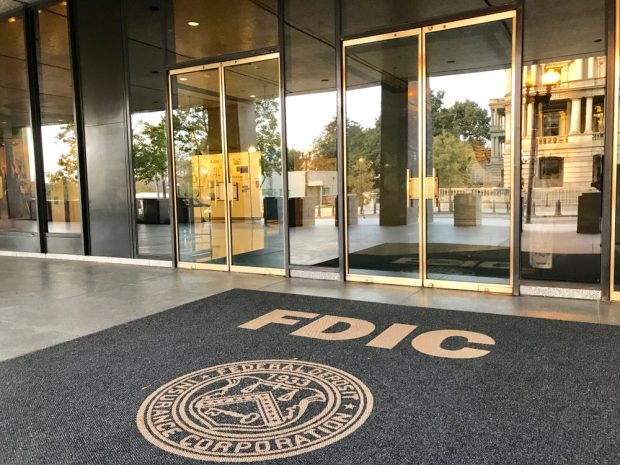Banking Crisis Saps FDIC Insurance Fund

The recent banking crisis has strained the U.S. government’s deposit insurance fund.
That’s according to data released by the Federal Deposit Insurance Corp. (FDIC) Wednesday (May 31) as part of its quarterly banking profile.
It showed that the government’s Deposit Insurance Fund had $116 billion in assets at the close of this year’s first quarter, down from $128 billion at the end of last year. The report also showed that the ratio of assets to insured deposits in America’s banks dropped to 1.1%, which is below the legally mandated 1.35% minimum.
However, FDIC Chairman Martin Gruenberg said his agency is on track to bring the fund back to the 1.35% level by September of 2028.
“The banking industry has proven to be quite resilient during this period of stress. Net income still remains high in relation to historical measures, asset quality metrics remain favorable, and the industry remains well capitalized,” Gruenberg said Wednesday.
“However, the industry continues to face significant downside risks from the effects of inflation, rising market interest rates, slowing economic growth, and geopolitical uncertainty.”
The data release comes in the wake of March’s back-to-back collapses of Silicon Valley Bank (SVB) and Signature Bank, which cost the government $20 billion. Not included in the first quarter data was the more recent failure at First Republic Bank.
The report also said the FDIC identified 43 banks on its “Problem Bank” list at the end of the first quarter, compared to 39 at the end of 2022. The list does not identify banks by name.
Last month, the FDIC announced a plan to collect $15.8 billion in extra fees over two years to recover its losses after the SVB and Signature Bank rescues. The agency said that 113 banks would pay this “special assessment,” with lenders who have at least $50 billion in assets carrying 95% of the cost.
“In implementing the special assessment, the law requires the FDIC to consider the types of entities that benefit from any action taken or assistance provided as well as economic conditions, the effects on the industry, and other factors deemed appropriate and relevant,” Gruenberg said. “In general, large banks with large amounts of uninsured deposits benefitted the most.”
Meanwhile, U.S. consumers think banks could do a better job protecting their assets, according to recent PYMNTS research.
Data from Consumer Authentication Preferences for Online Banking and Transactions, a PYMNTS and Entersekt collaboration, found that more than half of all Gen X, Gen Z, bridge millennial and millennial consumers want their banks to institute added security measures to guard online financial transactions.

